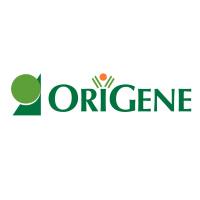CALCIUM CHLORIDE TRANSFORMATION OF BACTERIA WITH PLASMIDS
互联网
Preparation of Transformation Competent DNA
Dilute an overnight bacterial culture 1:20 in L broth. (For E. coli strain JA221, at A )
Using a serological pipet, resuspend the bacterial pellet gently in 1/2 the culture volume of cold 50 mM CaCl 2.
Centrifuge at 2500 rpm for 20 minutes at 4℃. Discard the supernatant.
Resuspend the bacteria VERY GENTLY in 1/10 of the original culture volume with cold 50mM CaCl2. It is very important that you do this gently. This is the leading cause of poor transformation efficiencies. Do not blast the cell pellet and do not vortex the cells! The cell walls of CaCl2.
Dispense a 250 µl aliquot into a microfuge tube for each transformation and keep these tubes on ice. Extra tubes may be frozen at -70℃, but the transformation efficiency of these cells drops rapidly after about a week of storage.
Preparation of DNA
Q.S. about half of the ligated DNA (usually 25 - 100 ng of vector) to 100 µl with 0.1 M Tris-HCl, pH 7.2. Save the remaining ligated DNA in case the transformation efficiency is poor, or there are too many colonies per plate and more dilute DNA is needed to isolate single colonies. Use 5 - 10 ng of uncut plasmid as a positive control.
Transformation
Gently mix the DNA with the bacteria as you add it with a pipet tip, and incubate the mixture on ice for 20 minutes.
Heat shock the mixture for 2 minutes at 42℃ (37℃ is also fine). Transfer the bacterial suspension to 10 ml of L Broth without antibiotic. Shake for 45 minutes in a 37℃ incubator.
Centrifuge the cells at 2200 rpm for 15-20 minutes at 4℃. Discard the supernatant.
Resuspend the bacteria in 100 µl of L broth (+ antibiotic) per Petri dish, and plate on a LB agar + antibiotic plates using the turntable and a sterile glass rod. For plasmids in which the insert is cloned into the ß-galactosidase gene for color selection, also add 10µl of 100 mM IPTG and 25µl of 4% Xgal to the cells before plating. The IPTG may be added at any time, but the Xgal should be added separately to each tube just before plating. Incubate the Petri dishes at 37℃ overnight. (Note: Resuspending the cells in 450 µl of L broth, vs 100 µl, also worked well).
Determine the transformation efficiency the next day by counting the number of colonies and scaling up this number per microgram of vector. Good transformation efficiencies are > 10
600 = 0.3, add thymidine (Tdr, 4mg/ml stock) to 1/80 of the culture volume so that the [Tdr] = 50 µg/ml. Skip the addition of Tdr other E. coli strains.) For all strains, when the A 600 = 0.6, centrifuge the cultures at 2500 rpm for 20 minutes at 4℃. Discard the supernatant.
2 (and 50µg/ml Tdr for JA221). Keep on ice 5 minutes.
2 treated bacteria are very fragile and the cells will lyse if they are vortexed or vigorously pipeted.
5 transformants/µg of vector DNA for this protocol. Higher transformation efficiencies may be obtained with RbCl 2 -treated cells, and with commercially available cells.







